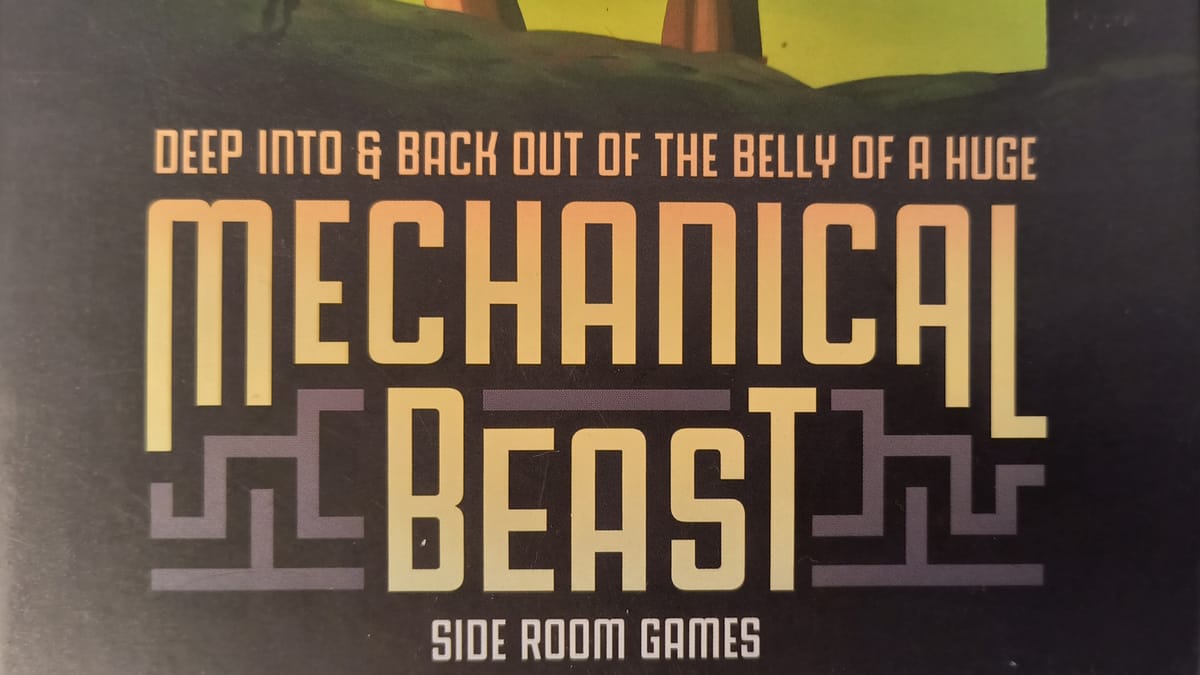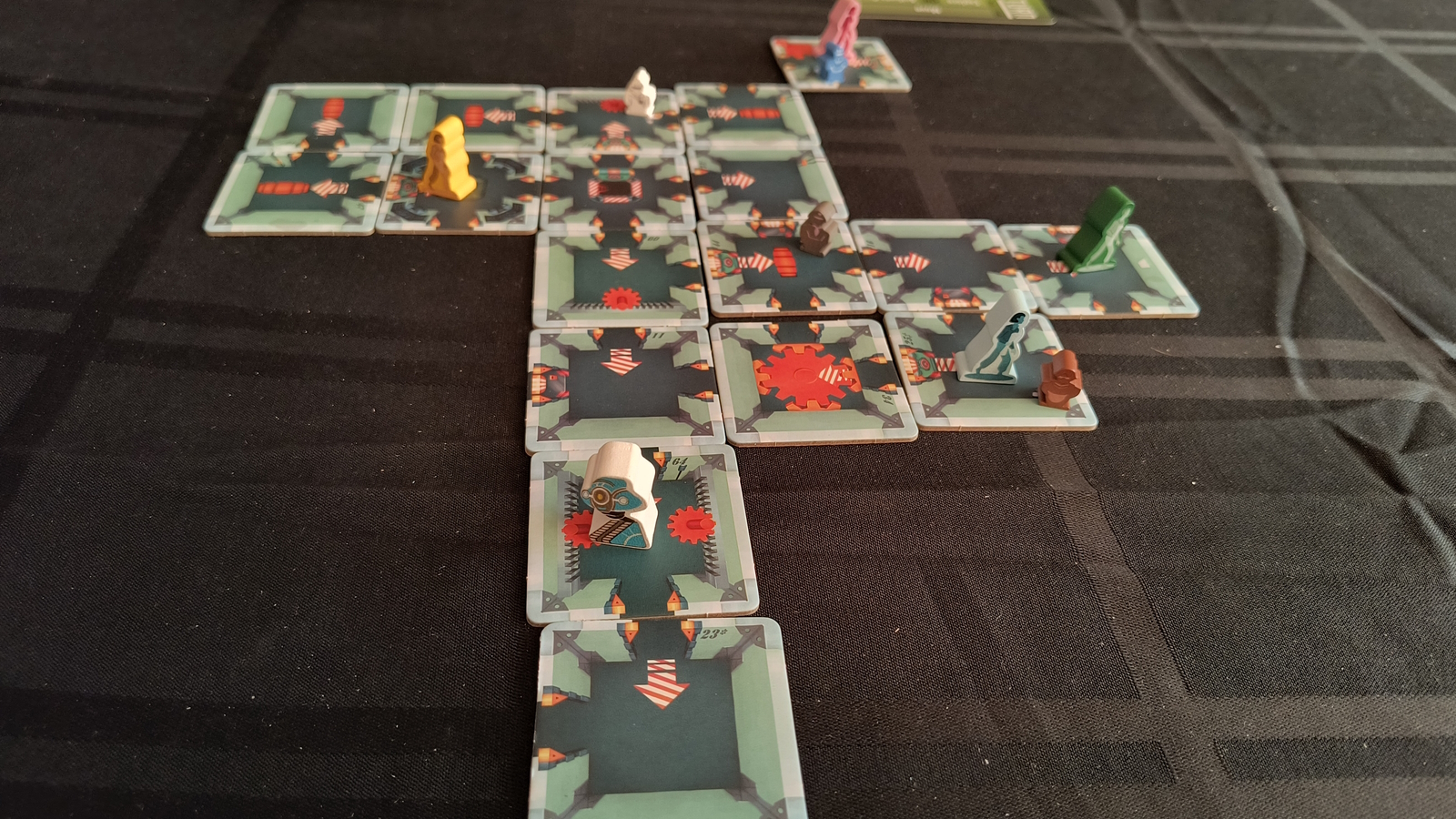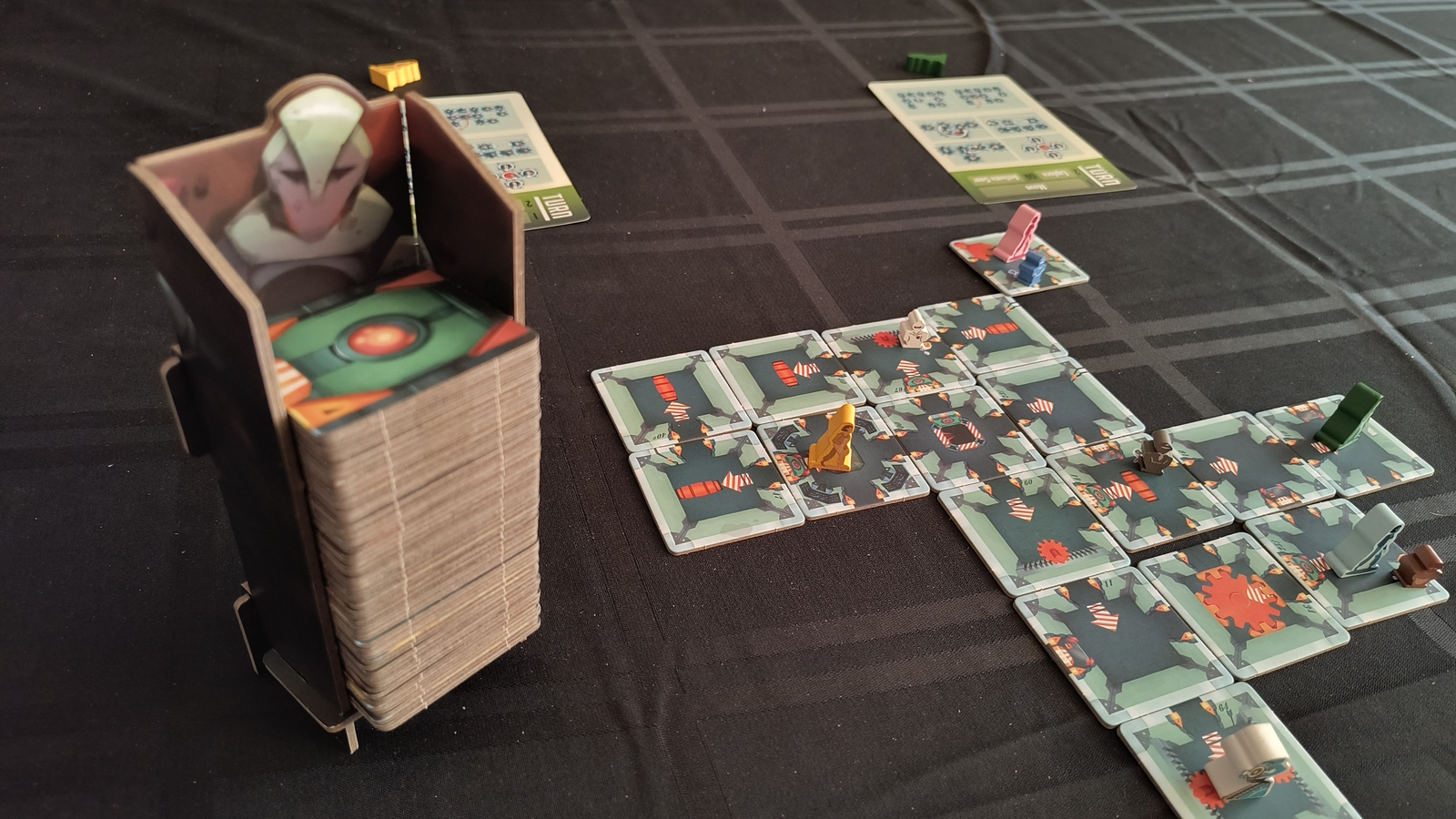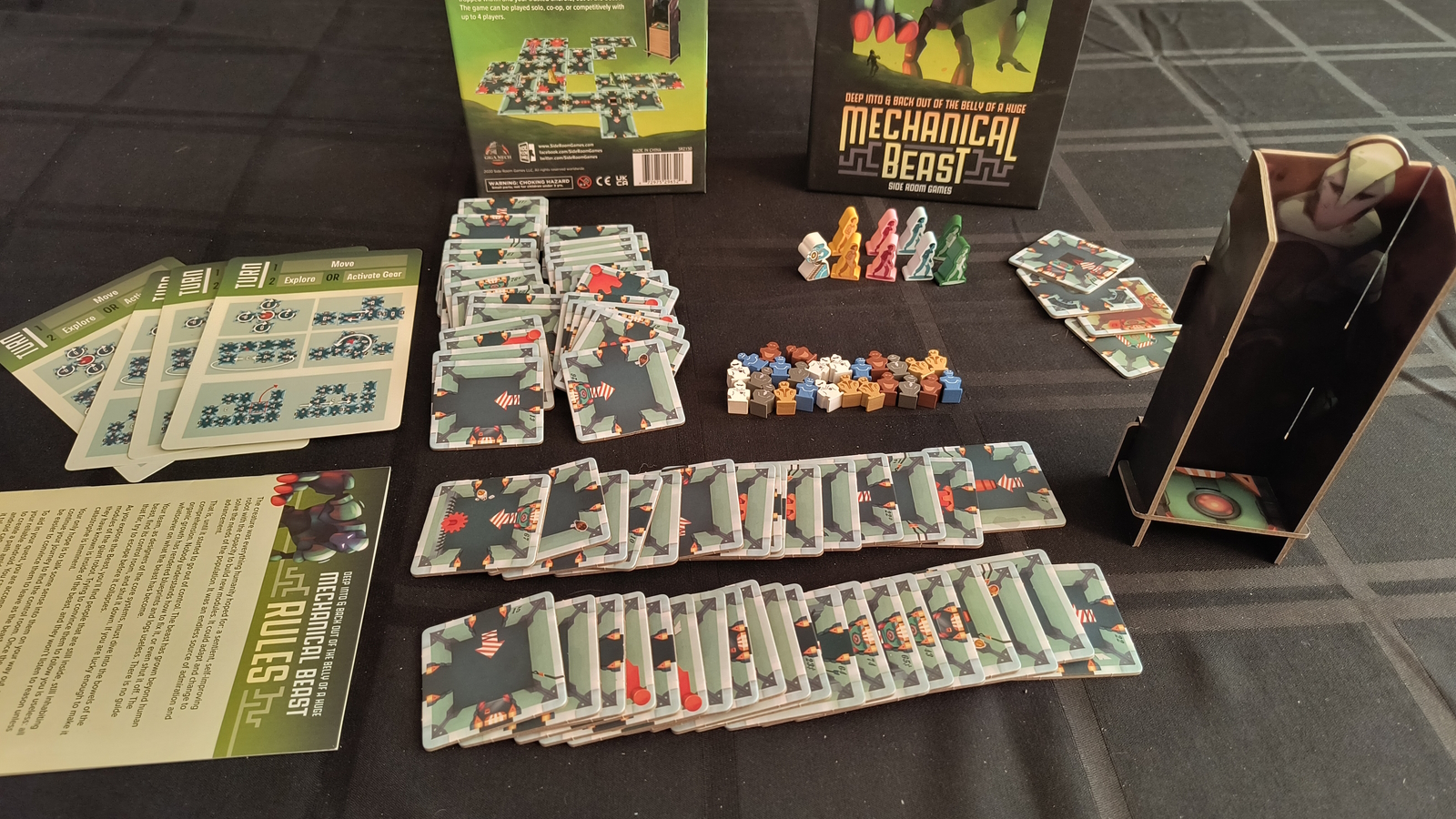
Our greatest creation has turned on us. The great mechanical monstrosity just kept growing, devouring resources to fuel its own growth. It’s time for the people that made it to put an end to it.
Deep Into & Back Out of the Belly of a Huge Mechanical Beast, or Mechanical Beast for short, is a maze building and manipulation game by Ben Morayta, published by Side Room Games. 1-4 engineers will head into the beast. They will start on an entrance tile, and explore the maze, one tile at a time, until they locate the control room of the mechanical monster. This will trigger the collapse, resulting in every move destroying the room they’ve left, as the engineers try to return back to the start, grabbing every civilian that was either working inside the Beast, or got scooped up during its unfettered growth.
It’s possible to get trapped entirely, but the bits of the Beast can be manipulated from the inside, gigantic gears rotating entire clumps of rooms, scooting through rooms like an elevator, spinning rooms about themselves, and sliding entire rows. The engineers can also work with a much nicer artificial intelligence, a robot that any engineer can command instead of their main character, but are also responsible for returning the robot to safety as well. You can continue exploring once the collapse begins, but if any character comes across the lockdown room, every empty tile becomes a dead end as well. It’s possible to get locked inside the remains of the Beast, ending the game in a loss.
The maze building mechanics might be some of the best I’ve seen in a game like this. Each tile has an arrow which indicates which direction the player entered the tile from, unlike, say, Betrayal At House on the Hill (what is it with maze games and long names?). This means that the maze can develop in ways that need to be solved. For example, many tiles have the way you came in from close behind you. Tiles may also have glass doors, which represent a second difficulty. For an easier game, you can treat all glass doors as unlocked, or you can treat them as locked doors, meaning all the corridors are far less open.
Less good are the actual goals and objectives of the game. Finding the control room is not a challenge, it’s merely an excuse to build out the maze itself. This isn’t necessarily bad, per say, but it does mean that the beginning third of the game is an unexciting, extended set up. After finding the control panel, the game becomes a much more chaotic and interesting puzzle. However, backtracking to track down each and every civilian feels like busy work, distracting you from the core goal of getting the heck out. Also, in my experience, it seems unlikely to fail to escape in the game. It is much easier to lose the civilians, which is probably why they are also a requirement to win.
With the mechanics of a maze that can be manipulated remotely, you might ask why the game is a coop experience. Wouldn’t this game work better with a more competitive bent? Well, there is a competitive version of the game in the rules, which nixes the annoying civilians and the communal robot, and gives each player two engineers to keep track of. It still has the first third of the game dedicated to setting the maze up, but the only escape hatch gets dropped by the player to the right of the player that finds the control room. From there, it’s a mad dash to get both of your engineers out, while sabotaging the other players.
To me, this is much closer to what this game could have been. I pictured a board game version of Bomberman. The cheeky act of sending a foe to the other side of the maze with a clever use of a gear does feel satisfying. As does forcing someone into a dead end by collapsing the rooms they were planning to escape with. However, these brief flashes of inspiration are still dulled by the moment to moment drudgery of maneuvering the maze.
And that’s probably always going to be the problem with “tile maze games”. Manipulating tiles, sliding them next to each other, will always result in log jams. If you have to rotate 4 tiles clockwise, you have to pick each one up, rotate and move it, and put it back down. It’s a lot of extra work to move these things around each turn. Even if you’re not using gears to shift the maze, the collapse mechanic means an entire row shifts every turn.
I also feel like the theme is a bit of a miss. The concept on the back of the box, as well as the name, sounds like a Jules Verne novel. Something like Fantastic Voyage, but inside a massive bot. However, the “beast” doesn’t move about like you’d imagine it would. Despite the image on the box as well as the tile holder showing the same “Iron Giant” style robot, the maze behaves more like a massive AI controlled complex. More “I Have No Mouth and I Must Scream” or “Paranoia” than “Fantastic Voyage”. It definitely does not feel like you’re inside a Mechanical Beast. The alternative would have been having the maze shift and change without your input, maybe tying various gears to die rolls. But of course, that would have extended the game time and required more fiddling with the maze, so I’m not sure there is a perfect answer. Despite the mechanics not matching up with the theme, the art and components certainly mesh well enough. The helper robot and the engineers all give off those 60s sci-fi vibes, and are all high quality.
At any rate, the game does have some qualities to like about it. It’s a fun enough activity for certain kinds of folks. I personally had the best time of it alone, where there was no rush to let other players take their turn and I could bend my mind to the best way to solve the puzzle of the maze. It also meant that the frustration of fiddling with the tiles was at its lowest, since the only time frame I was on was my own. I’d still rather play the competitive mode with friends, given the option, but I think after only a few games of Mechanical Beast, I’ve had my fill either way.
Mechanical Beast
Good
A maze exploring game with clever generation and manipulation mechanics. A lack of actual interesting goals and mechanics makes the game feel less interesting and more like a chore.
Pros
- Lovely sci-fi art style
- Clever maze mechanics
Cons
- Nothing to do in the maze but get in and out, collecting folks on the way.
- A bit of a theme mismatch. Tries for Jules Verne, gets Harrison Ellison.
- Moving the tiles around is fiddly and results in jams.
